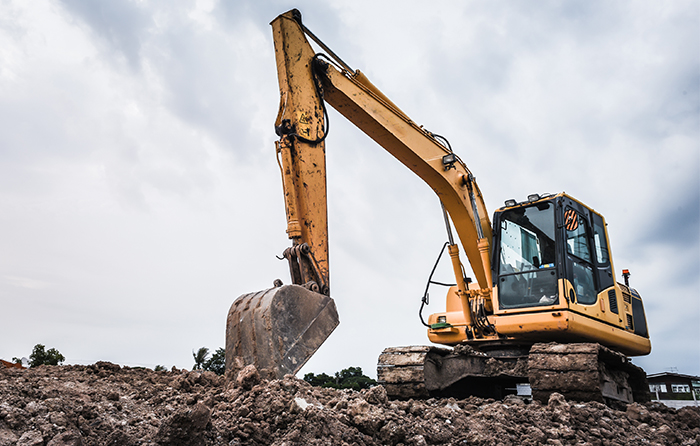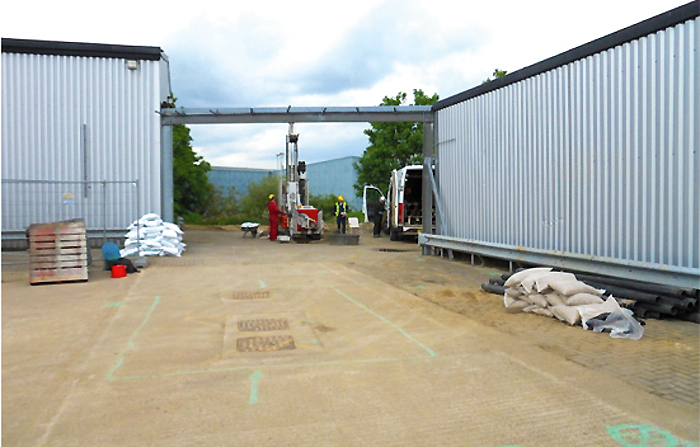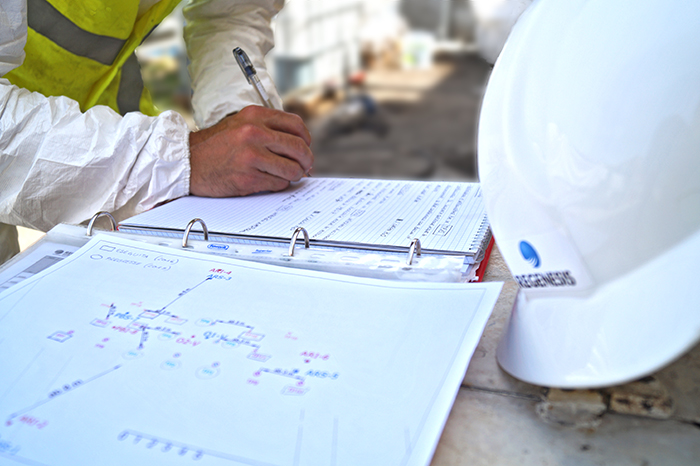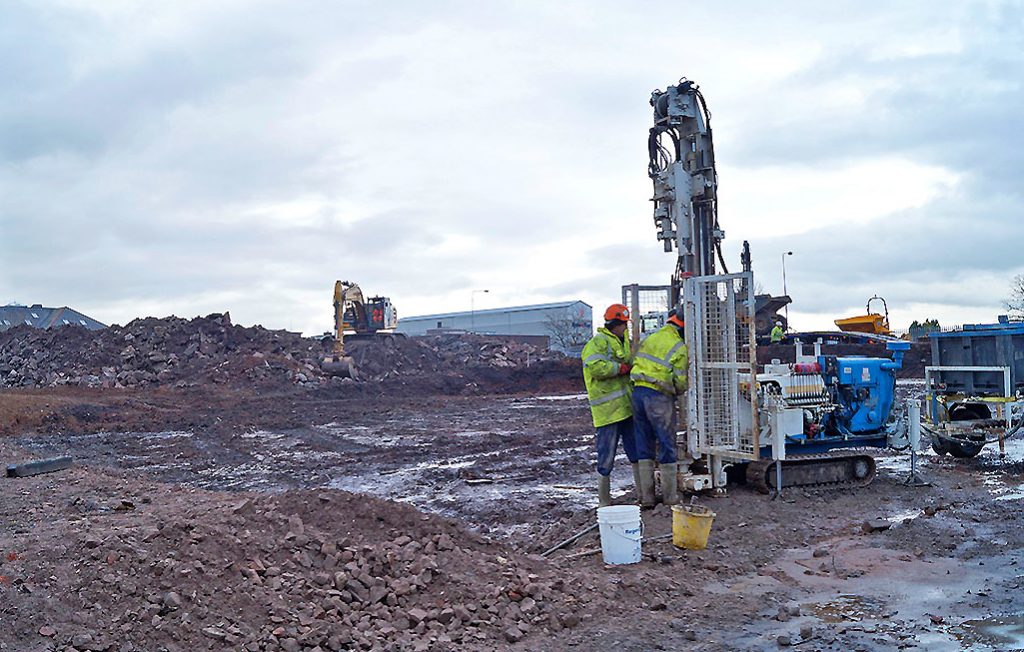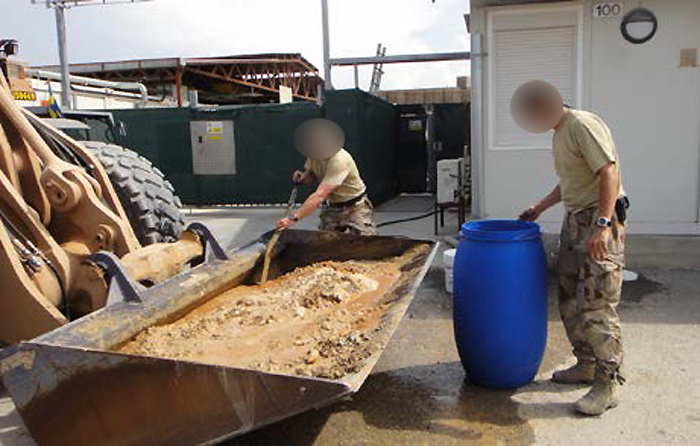Remediation of Disused Petrol Filling Station in Liguria, Northern Italy
In Situ Environmental Remediation – Excavation application: In Situ Chemical Oxidation and Aerobic Bioremediation treat TPHRead More
Pilot Application, Petrol Station Redevelopment, Pesaro, Italy
In Situ chemical oxidation treats TPH and BTEX. A Pilot Study with RegenOx. Read More
In Situ Remediation at Active Petrol Station in Genova, Italy
Environmental Remediation via In Situ chemical oxidation cleans up TPH contamination without mobilisation of heavy metalsRead More
In Situ Treatment of 1,2 Dichloroethane Under a Factory, Kent, UK
A single application reduces recalcitrant contaminant below targetRead More
MBTE Remediation at an Active Petrol Filling Station in Italy
Combination of injection activities with targeted groundwater abstraction resulted in successful treatment of non-accessible source areas Read More
Hotspot Treatment of Petroleum Hydrocarbons – North West, UK
Phased, in situ treatment with PetroCleanze and ORC-A Socks allows main contractor to keep programme on trackRead More
Fuel spill treated using RegenOx at a Swedish military base in Afghanistan
RegenOx® has been successfully used as an emergency response cleanup reagent by the Swedish Army to remediate a minor fuel spill in Afghanistan.Read More
RegenOx® and 3-D Microemulsion® Injections Treat VOC Impacted Soils
PCE Contamination at Former Dry Cleaning Site in Northern California Remediated
Project Highlights
- PCE soil concentrations of up to 16,095 ug/kg in the hot spot area
- After initial ISCO application, ERD was used to continue VOC concentration reduction
- Latest sampling event reported concentrations below clean-up target levels
- No further remediation needed on-site
Project Summary
In 2007, VOCs including (PCE) and related compounds including (TCE), (cis-DCE), and vinyl chloride (VC) were detected in soil and groundwater samples collected at a site in Northern California. A comprehensive field investigation conducted under the Regional Water Quality Control Board identified a distinct VOC-impacted soil area behind the former dry cleaner. Site characterization work identified the presence of VOCs including PCE with soil concentrations of up to 16,095 ug/kg in the hot spot area. A combined technology remediation approach was

implemented on-site including injections of RegenOx®, 3-D Microemulsion® and HRC® Primer. At the most recent sampling event, approximately 2.5 years post-application, the maximum detected concentrations of PCE and related VOCs was 420 ug/kg and all soil sample results were below the Soil Cleanup Levels. These data suggest that the combination of in situ chemical oxidation (ISCO) with RegenOx, followed by enhanced reductive dechlorination with 3-D Microemulsion has been highly effective in reducing VOC concentrations in soil.
Remediation Approach
Three rounds of ISCO injections with RegenOx were applied on-site to treat the vadose zone soils. After the first round of injection, PCE was detected in soil samples collected in this area at maximum concentrations of 2,000 ug/kg, which, while substantially lower than initial concentrations indicated a need for further treatment. Enhanced reductive dechlorination (ERD) was performed by injecting 3-D Microemulsion and HRC Primer into vadose zone soil to treat PCE and related daughter products. The products were injected into 33 borings in the hot spot area with the treatment interval between 3 feet and 17 feet below ground surface. The most recent soil samples indicated a VOC concentration reduction to below the Regional Water Board’s soil to groundwater leaching ESLs (upon which the Site Cleanup Levels listed in the Site Cleanup Order were based). As a result, residual VOC concentrations in soil in the hot spot area do not appear to present a significant source for leaching to underlying groundwater. Continued groundwater monitoring being performed. No further remediation is required in this area.
Technology Description
RegenOx is an advanced chemical oxidation technology that destroys contaminants through powerful, yet controlled chemical reactions and not through biological means. This product maximizes in situ performance while using a solid alkaline oxidant that employs a sodium percarbonate complex with a multi-part catalytic formula.
3-D Microemulsion factory emulsified is an engineered electron donor material that offers a novel 3-stage electron donor release
profile, pH neutral chemistry and is delivered on-site as a factory–emulsified product.
HRC Primer is a less viscous version of the standard Hydrogen Release Compound (HRC) product. It is a thinner, water-like compound that is typically injected into an aquifer where it releases lactic acid at a rate faster than standard HRC (several weeks), but at a slower, more controlled rate than dispersing aqueous simple sugar solutions or straight lactic acid (several days).
RegenOx® Excavation Application Treats Groundwater Contamination
80% TPH Concentration Reduction at California DoD Facility
Project Highlights
- Source removal and RegenOx® ISCO application reduce contamination levels to clean-up standards
- Horizontal piping network installed as contingency plan for additional remediation
- 80% reduction in groundwater concentrations observed
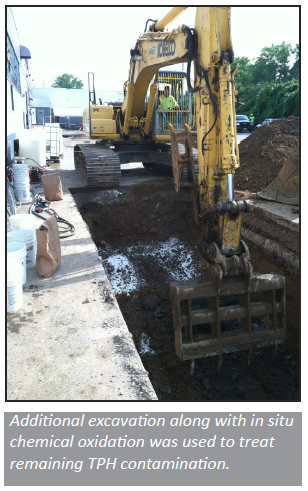
Project Summary
The project site is a former Department of Defense (DoD) fuel dispenser facility in Northern California where past corrective measures included AST/UST removal, soils excavation and groundwater monitoring. Sample results indicated continued elevated concentration levels of TPH-G, TPH-D and TPH-mo within a defined area near the former USTs. The treatment approach included additional excavation and in situ chemical oxidation (ISCO) application via RegenOx mixed into saturated zone. Quarterly sampling indicated an 80% reduction in groundwater concentration levels post treatment; which met the corrective action cleanup levels for TPH.
Remediation Approach
The selected contractor excavated, managed and disposed of impacted soils to depths of nine feet over the two defined treatment areas. RegenOx Part A (oxidizer) and Part B (silica gel activator solution) were placed in the saturated zone and mixed in with the excavator bucket to 3 feet below the excavation bottom. Prior to backfill and compaction, a horizontal piping network was installed to serve as a contingency plan in the event that any additional in situ and/or bioremediation remediation was required. Regenesis assisted the client with the horizontal piping network design which was incorporated into the bid specifications. This site area has been submitted for closure and with continued quarterly monitoring.
Technology Description
RegenOx is an advanced chemical oxidation technology that destroys contaminants through powerful, yet controlled chemical reactions and not through biological means. This product maximizes in situ performance while using a solid alkaline oxidant that employs a sodium percarbonate complex with a multi-part catalytic formula.
Acetone and Petroleum Hydrocarbons Treated at Active Industrial Facility
Combined ISCO/Bioremediation Treatment Approach Reduces Contamination Levels
Project Highlights
- Acetone concentrations pre-remedation were as high as 54,000 μg/L
- Site access agreement required that existing site operations could not be interrupted for construction
- Site water was not allowed to be used therefore all water had to be trucked in and a separate water permit to access city water from fire hydrants was required

Project Summary
A former industrial facility in northern California operated as a gas manufacturing plant from the early 1900s until it was decommissioned in 2001 and sold. The property is currently leased by a bottled water distribution facility.
At this facility, acetone was used extensively in acetylene manufacturing. The acetone was stored on-site in underground storage tanks (UST) but no evidence of leaking acetone USTs was found.
However, high concentrations of acetone – a pre-remediation maximum of 54,000 micrograms per liter (μg/L) were found in one area of the site. Other dissolved chemicals of concern (COC) include gasoline and gasoline-range petroleum hydrocarbons from former USTs such as benzene, toluene, ethylbenzene and xylenes (BTEX).
The extent of contamination in the early 1990s extended to large portions of the site. A pump and treat system was used on-site in 2005, however contamination persisted. Contamination approximately 12 feet below ground surface was detected within the soil. A remediation plan using both ORC® Advanced and RegenOx® was used to treat the remaining contamination.
The site access agreement for this project required that existing site operations could not be interrupted for construction. In order to minimize disturbance to tenants and work within these constraints, all drilling field work was performed on weekends. Site water was not allowed to be used therefore all water had to be trucked in and a separate water permit to access city water from fire hydrants was required. In addition, multiple drill rigs and support vehicles operated within a small area, increasing logistical and safety concerns.
Remediation Approach
A mixture of 6,500 pounds of RegenOx and 3,000 pounds of ORC Advanced was injected at 45 locations using multiple direct-push drill rigs. The injection points were designed in a grid pattern with a nominal 15-foot spacing between injection points, but more densely placed in the area of highest contaminant concentration. Benzene concentrations in groundwater have stabilized at about 10 μg/L and acetone concentrations have stabilized at about 1,600 μg/L. Post-treatment monitoring results show that all the COCs in the treatment area have consistently remained below health-based cleanup levels since the treatment was applied.
Technology Description
Advanced Formula Oxygen Release Compound (ORC Advanced®) is a proprietary formulation of food-grade, calcium oxy-hydroxide that produces a controlled-release of molecular oxygen for periods of up to 12 months upon hydration.
RegenOx is an advanced chemical oxidation technology that destroys contaminants through powerful, yet controlled chemical reactions and not through biological means. This product maximizes in situ performance while using a solid alkaline oxidant that employs a sodium percarbonate complex with a multi-part catalytic formula.

 Americas
Americas Europe
Europe Français
Français Deutsch
Deutsch Italiano
Italiano Español
Español